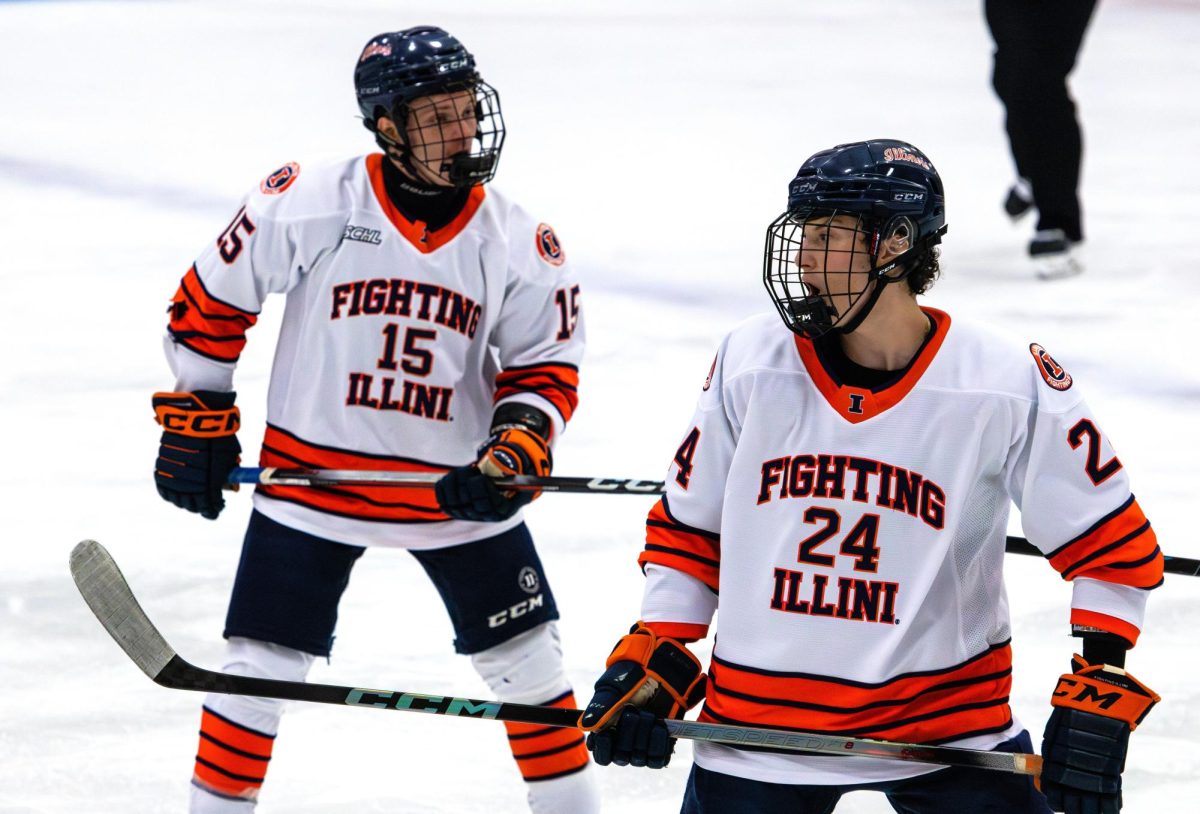Approval from the Food and Drug Administration is pending for a fish that has been genetically engineered to grow nearly twice its natural rate. If approved, the fish would be the first genetically engineered animal on the market for human consumption.
Approval from the Food and Drug Administration is pending for a fish that has been genetically engineered to grow nearly twice its natural rate.
If approved, the fish would be the first genetically engineered animal on the market for human consumption.
The fish is an Atlantic salmon engineered to express two fish genes that enable it to reach market weight in 18 months — as opposed to the three years it takes for the conventional fish.
According to Bruce M. Chassy, professor of food science, the first gene encodes a growth hormone normally expressed in Chinook salmon, the largest of the salmon species.
Get The Daily Illini in your inbox!
The second gene is a promoter taken from ocean pout, which enables the growth hormone to be expressed at high levels during juvenile years, causing the fish to eat more and grow faster.
Anticipating concerns over the scientific methods used to generate the fish, Chassy said the process of genetically engineering an animal is simply an improved way of breeding.
“(With genetic engineering), we can much more quickly introduce a trait because rather than having to cross things and sort through for the right combination of traits, we can take an animal that has all the traits we want and just add a new trait in one quick step,” Chassy said.
That makes the process of breeding for desirable traits not just faster, but more specific, Chassy said.
Chassy, who served on the FDA Food Advisory committee for several years, said research studies performed over the past 20 years have found no differences between the genetically engineered salmon and native Atlantic salmon, making them safe for human consumption.
“That’s actually looking at all the composition studies, the hormone levels, the fatty acid levels, everything they could measure,” said Chassy. “They just spent years looking at every conceivable thing they could [and] found nothing different about it.”
Advocacy groups, such as Food and Water Watch, or FWW, said they are opposed to FDA approval of the salmon because of potential dangers posed to human health and the environment.
“We don’t know everything that happens when you mess around with these genes,” said Patty Lovera, assistant director of FWW.
Lovera expressed additional concerns over the design of the studies and the number of fish that were tested, stating that some of the studies involved as little as 18 fish.
“We want to see a much more thorough assessment of these animals in regards to allergies and nutrition,” Lovera said. “We’d want to see a lot more samples, more data [and] studies performed over a longer period of time.”
The FDA does not require long-term studies on foods since the safety of a food can be determined on the basis of its composition, Chassy said.
Chassy said much of the public’s fear of genetically engineered foods comes from advocacy groups that receive part of their funding from wild fish and organic farm businesses.
“We’ve put this idea in people’s minds that it’s not natural and that genetic engineering is bad,” Chassy said. “And then we bring a transgenic salmon up and say do you want to eat it or not. They’d kind of be nuts not to say, ‘No, I don’t want to eat it.’”
Some University students said they are unsure about the safety of genetically engineered fish and whether they would eat them.
“I definitely would go natural because that’s the way my parents taught me to go,” said Omar McTabi, junior in LAS. “My science mind says it’s okay to eat them, but my heart says, ‘Momma knows best.’”
Others, like Christine Hopkins, junior in Business, say they wouldn’t be initially inclined to go for genetically engineered foods but could be convinced if the science shows it to be safe.
Brian Slininger, junior in LAS, said he is concerned about the moral implications of genetically engineering animals.
“I don’t see any problem with modifying plants,” Slininger said. “But with animals, I see more of a moral thing. There’s just something about modifying animals’ genes to make them grow faster that I don’t agree with.”
Chassy said he would not hesitate to eat the salmon since there is no reason to be concerned.
“I have no doubt the fish are safe,” Chassy said. “I’d eat the fish if they give me one. I’d feed it to my grandkids. I mean, there’s nothing they’ve done to this fish that in any way makes it any less safe. It’s a salmon.”





